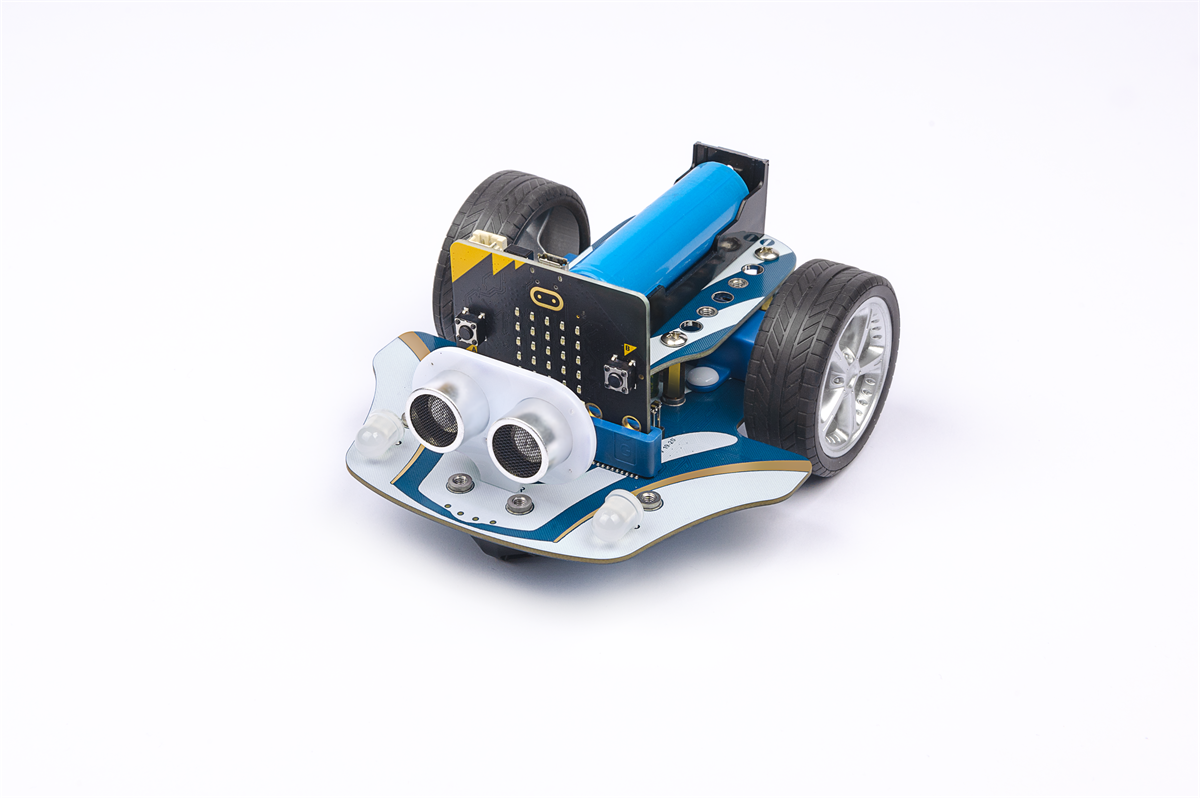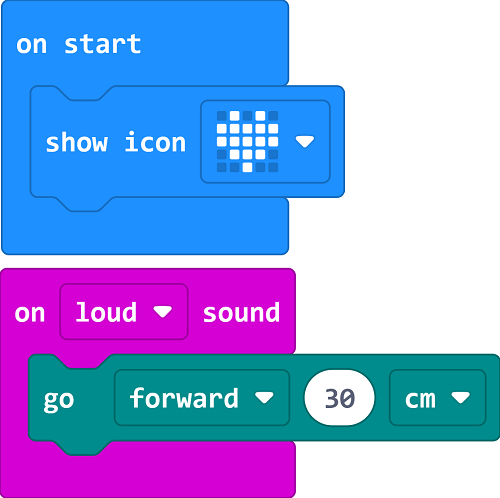Case 04 voice control
Introduction
This course aims to let students learn and explore knowledge points such as car motor control, noise sensor, sound propagation and noise level by making a smart racing car, and apply these knowledge to control the driving of the car.

Teaching Objectives
Understand the principles and methods of trolley motor control, and learn to control the trolley's forward, backward and stop.
Learn how noise sensors work, their applications, and how sound travels through the air.
Learn to control the speed and direction of the car according to the noise level, and realize the function of voice-activated car.
Teaching Preparation
Cutebot Pro × 1
micro:bit V2 × 1
Teaching Process
Course Introduction
Hello everyone! Today we will continue our smart car making project, but this time we will set a new challenge for the car. Have you ever thought about how to use voice to control the driving of the car?
We can use the noise sensor to detect the size of the sound, and realize the sound control function by controlling the motor of the car. In the next lesson, we will understand how sound travels, and implement a car that can be controlled by the sound level.
Inquiry Activities
How to use the motor control and noise sensor of the car to realize a car that can be controlled by the sound level? What are your thoughts and guesses?
understand how sound travels;
Know the noise level.
Sample Code

Link:https://makecode.microbit.org/_CcwUMPfzEYRj
You can also download the program directly from the following web page.
Teamwork and Presentation
Students are divided into groups to complete the production and programming of the car together.
Students are encouraged to collaborate, communicate and share experiences with each other.
Each team has the opportunity to show the smart car they made to other teams and demonstrate the process of controlling the car through the volume of sound.
Summary and Reflection
Review course content to remind students of what knowledge and skills they have acquired.
Guide students to discuss the problems and difficulties they encountered in the production process, and how to solve these problems.
Guide students to think about the optimization and improvement of the voice-activated car, such as adjusting the noise level threshold and adding other voice control functions.
Outreach Activities
Provide students with opportunities for further exploration and practice, such as:
Challenge students to control the speed and direction of the car through voice to achieve more complex driving paths.
Encourage students to design and implement other fun voice-controlled functions such as turns, stops, and more.